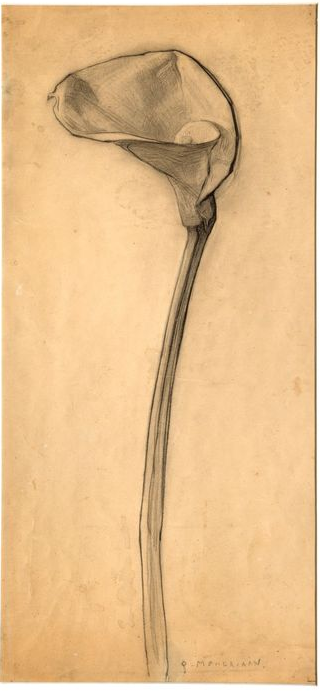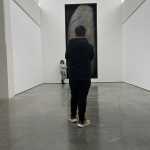I went to 'Straatnieuws' yesterday, and was in for a big surprise: the editor likes…
Breaking news

Headline in my newspaper today – a new Mondrian drawing has been discovered amongst the papers of Arthur van Schendel, a dutch writer from around 1900. A drawing of an arum lilly. The king of abstract apparently made his money by painting and selling flower paintings.
Some quotes from the article: “While Mondriaan researched flowers by reading botanical tomes, he was convinced that flowers have ‘a deeper beauty’ than just their outward appearances.’ ‘For his flower studies, that Mondriaan was able to sell for reasonable prices, he always found buyers. In the years that he took the definitive step toward abstraction, conciding with the First World War, he stopped producing them because he came to see the reproduction of nature as an inferior endeavor. Nevertheless he took up the genre again aroung 1922 in Paris when hunger threatened. ” “Some of the cheaper models sold so well that he made casts that he could copy using carbon paper or tracing paper, giving them cachet with a few pencil strokes or a little watercolor paint.
‘It was the American poet and art historian David Shapiro that in 1991 posed the first convincing theory about Mondrian’s flowers. According to Shapiro they tell a story that is much more romantic than ‘this pristine priest’ is willing to allow. They reveal a boundless passion for the feminine that Mondrian, an entrenched bachelor and for many a priestly figure indeed, tried to keep under control with his stilllifes.
“In the late 19th century a true flower culture took root in European literature and art because the enormous potential for symbolism. They can expres flowering and wilting, life and death, appetite and aversion, lust and suffering, and each variety has its own association. Especially the chrysanthemum, the lilly and the lotus, the orchid, the rose and the sunflower are foremost icons of symbolism.







